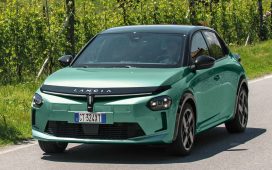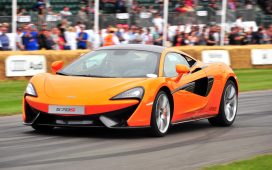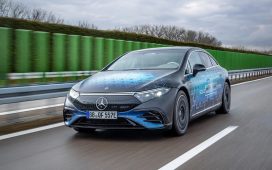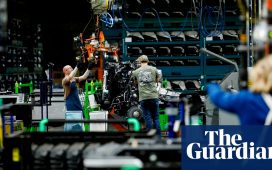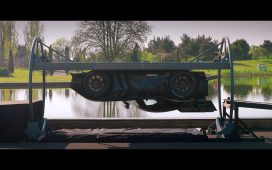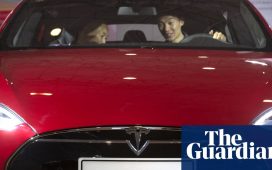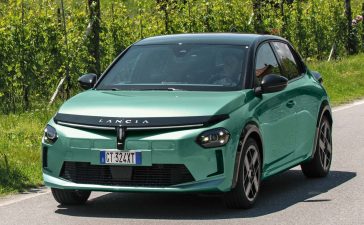Pop-up headlights are a source of delight to many, with their inherent drama and surprise and hiding and revealing, but sometimes the “face” of a car feels unfinished without the visual element of headlights, which, to our anthropomorphizing brains, form the eyes. You’d think that there would be some auto designer as visually greedy as I am, wanting the excitement of pop-up or otherwise hidden lights along with the visuals of integrated and visible headlamps. It’s a complicated ask, and as far as I can tell, only one automaker has actually pulled it off, and even then in incredibly small numbers. That car was the Ferrari 365 California.
The Ferrari 365 California was built between 1966 and 1967, which may seem like a short run, but only 14 cars were actually built in this period, so the pace was, you know, leisurely. Mechanically, the 365 California didn’t really break any new ground; the chassis was from the 500 Superfast, wishbone front suspension and both coil springs and leaf springs out back, holding up that live axle. A 4.4-liter V12 was up front, despite the way the door handles seemed to suggest a mid-mounted engine’s air intakes.
![]()
See? They’re very cool door handles, so you can forgive their little deception:
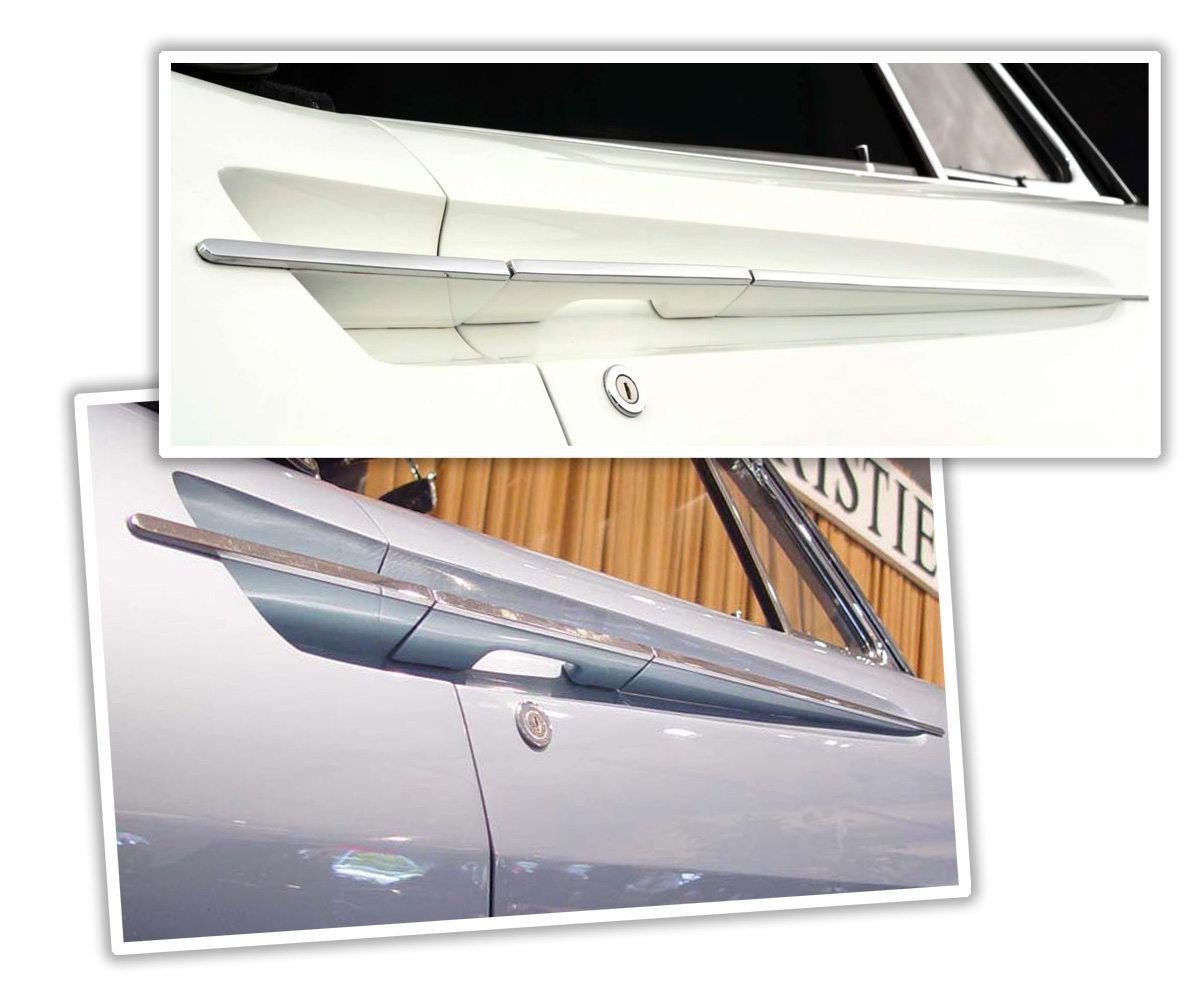
Wow, those are pretty stunning. I mean, the whole car is stunning; that’s the main point of it.
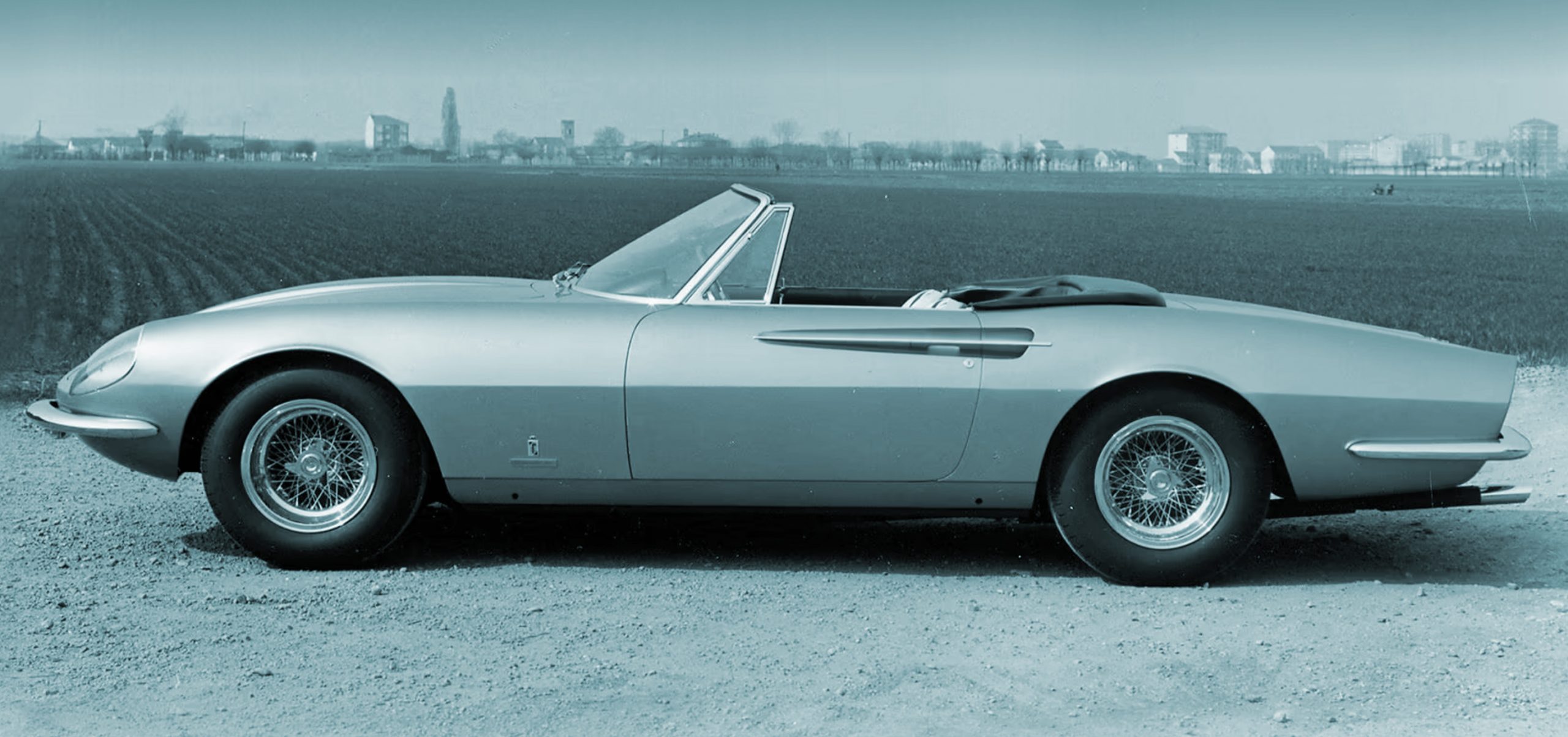
Designed by Tom Tjaarda while working for Pininfarina, the 365 California is a stunning design, clean and sleek and taking a number of liberties with the usual Ferrari design of the 1960s. The rear, with its Kamm-like cut-off tail, is unusual for a Ferrari, and, since we’re back there, we may as well look at the striking and novel taillight treatment. What surprises me about the taillight setup is how it both incorporates off-the-shelf small round taillight lenses and a custom-designed shaped lens.
What also surprises me is that in a run of 14 cars I have so far seen three different taillight treatments:
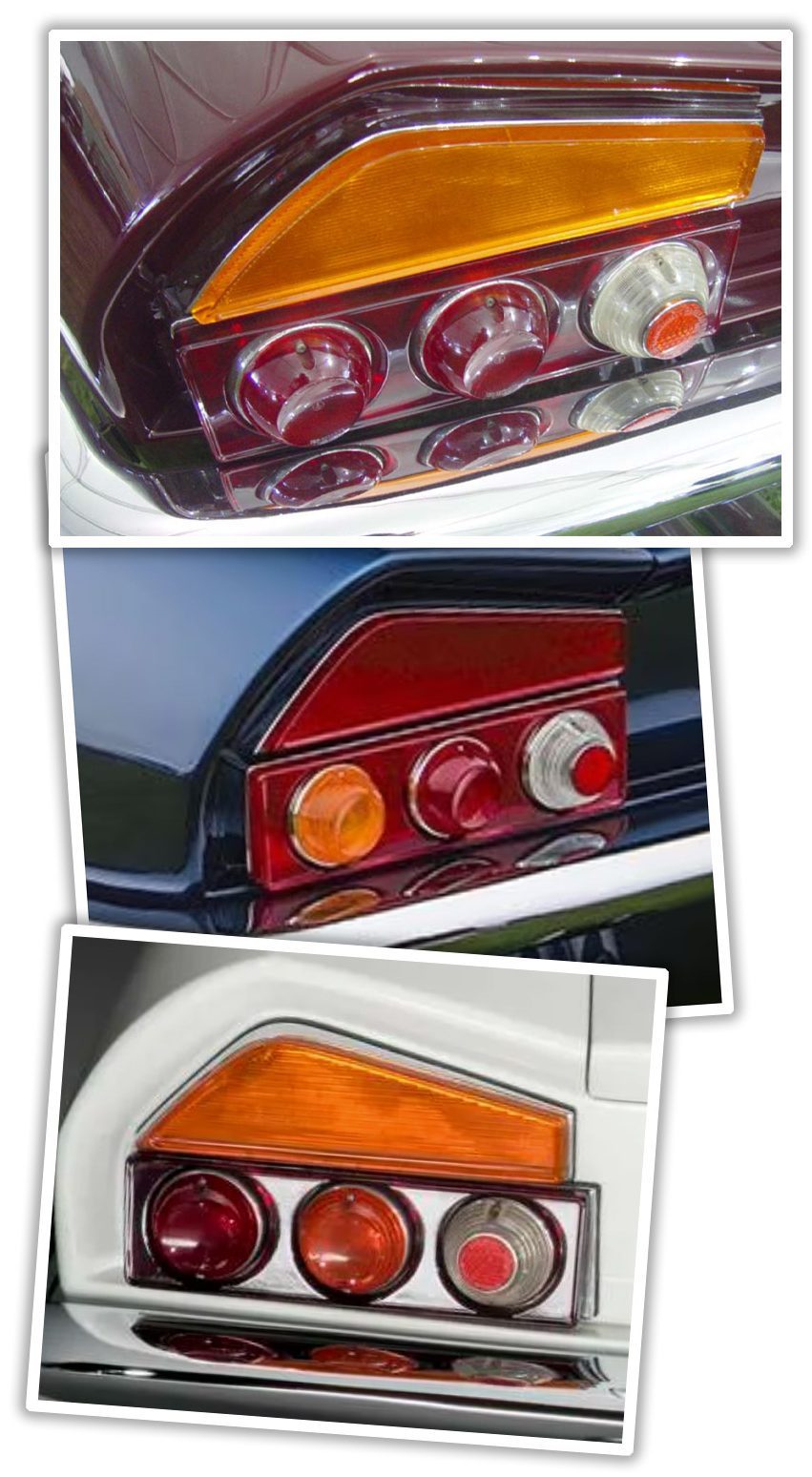
There are two with an amber top turn indicator section, one of which has the lower three round lamps set into a red plastic translucent taillight lens-like panel, and the other has them set into a chrome panel, and then there’s a version where the shaped upper lens is red instead of amber and the amber indicator is one of the three lower round lamps. How did they have such trouble making up their minds about this? There are only 14 cars!
But, we’re here to talk about the front lighting, and, specifically the combination of pop-up driving lights and conventionally-integrated headlights, here covered under plexiglass covers, as was Ferrari fashion.
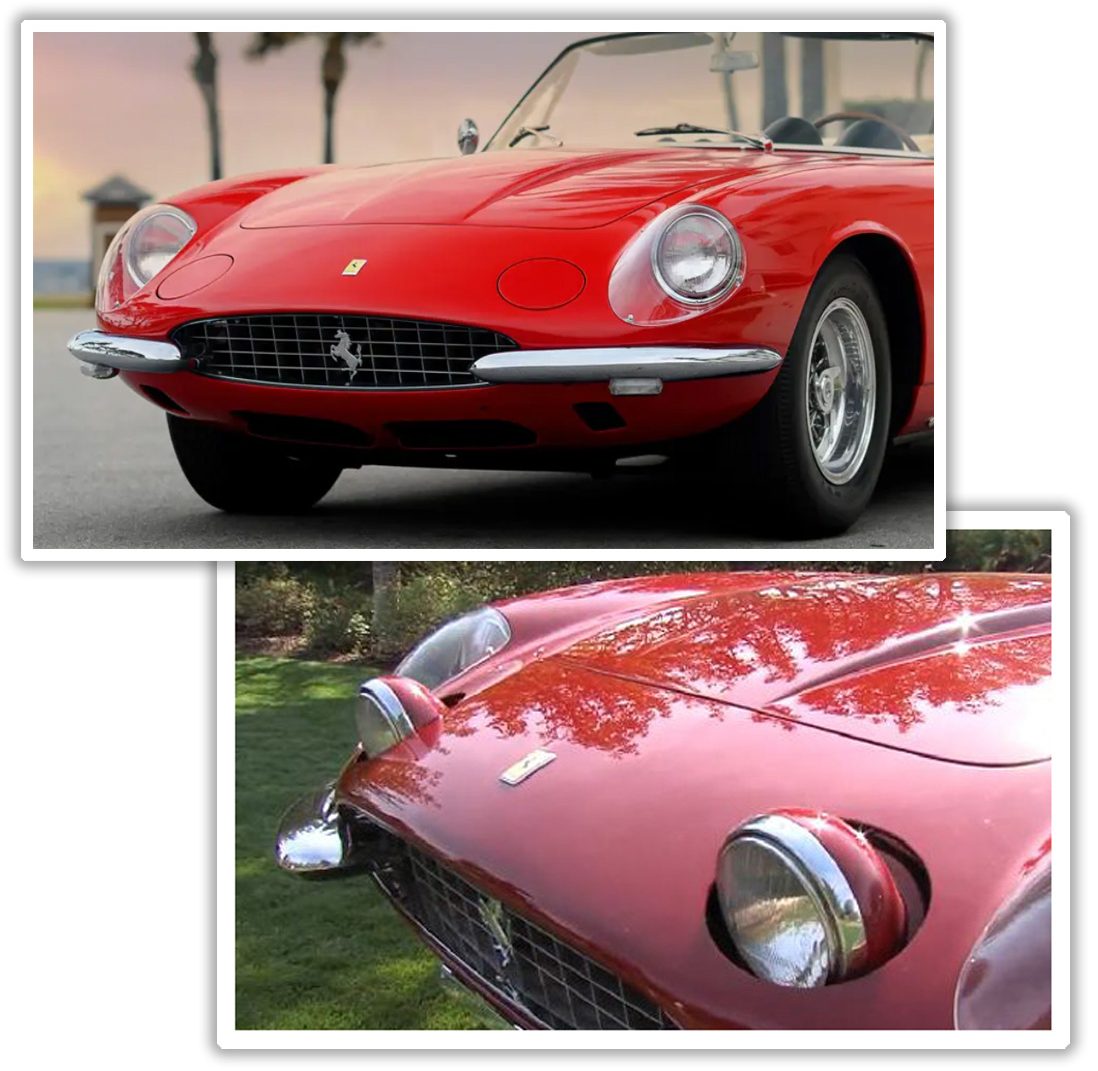
Sure, there have been cars with pop-up headlights and exposed driving lights, like the Porsche 914:
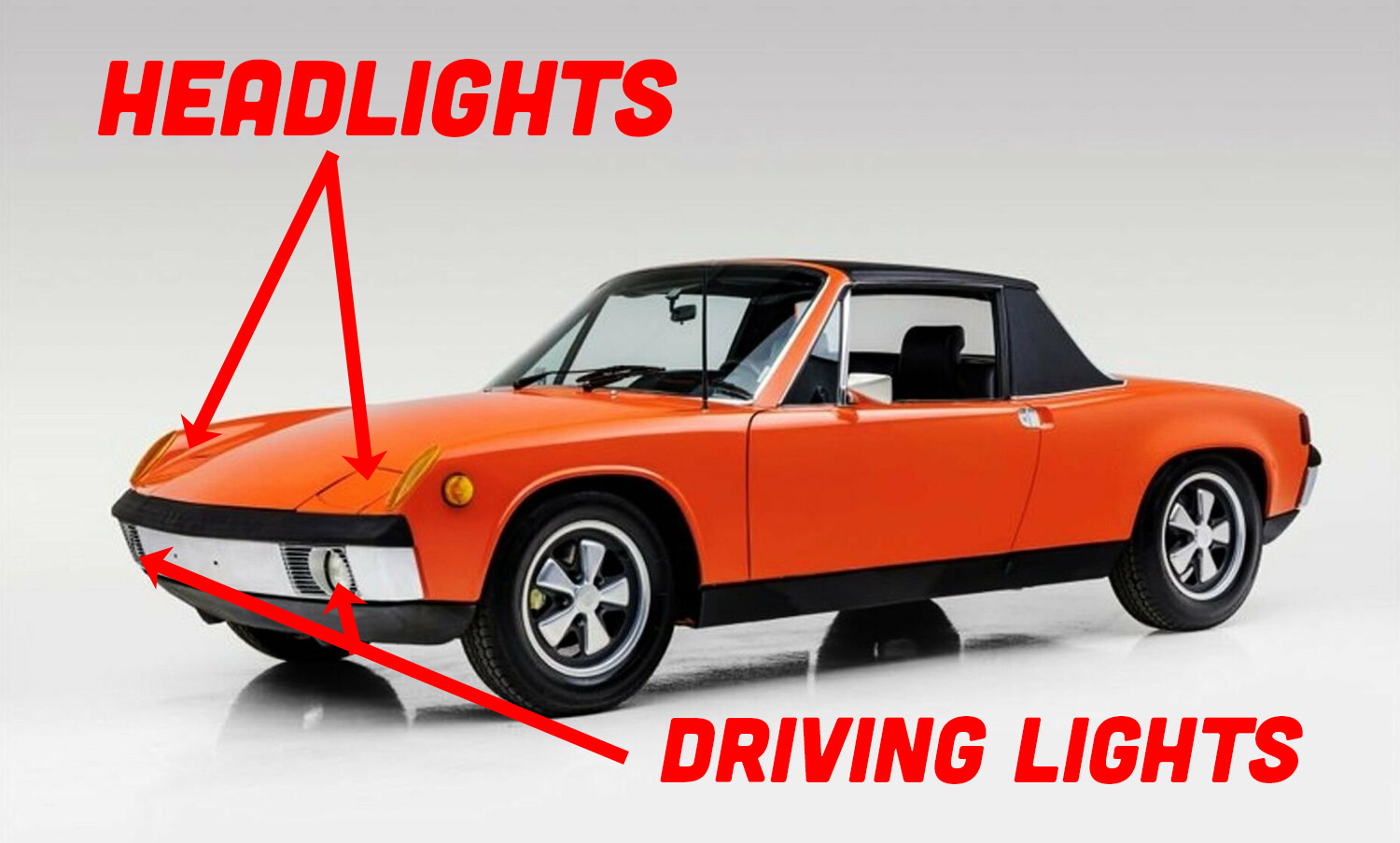
That’s not so uncommon. But having exposed actual headlights and covered driving or auxiliary lights, that’s where things get weird. Weird enough that I’m pretty sure those 14 Ferrari 365 Californias are the only cars to have done it that way.
Well, now that I think about it, maybe we could count the Subaru passing lamp, or “cyclops eye” light?
That might count, too, even if it is just one lamp.
But still, the idea of integrated, exposed actual, main-and-high-beam headlights and pop-up driving or fog lights, that seems to be a rare thing.
Why don’t we see this more? Aerodynamic demands have made conventional pop-up lights unpopular, as they tend to act as aero speed brakes, but why not something that gets more occasional use, like driving or fog lamps? Those would be a lot more fun if they were pop-ups or covered or hidden in some way.
I’m probably forgetting about another car that did this; if so, I’m pretty sure this is the crowd to let me know what that is, so if you have ideas, shove them in the comments so I can see! And learn! And live! And love!
Support our mission of championing car culture by becoming an Official Autopian Member.

Got a hot tip? Send it to us here. Or check out the stories on our homepage.

